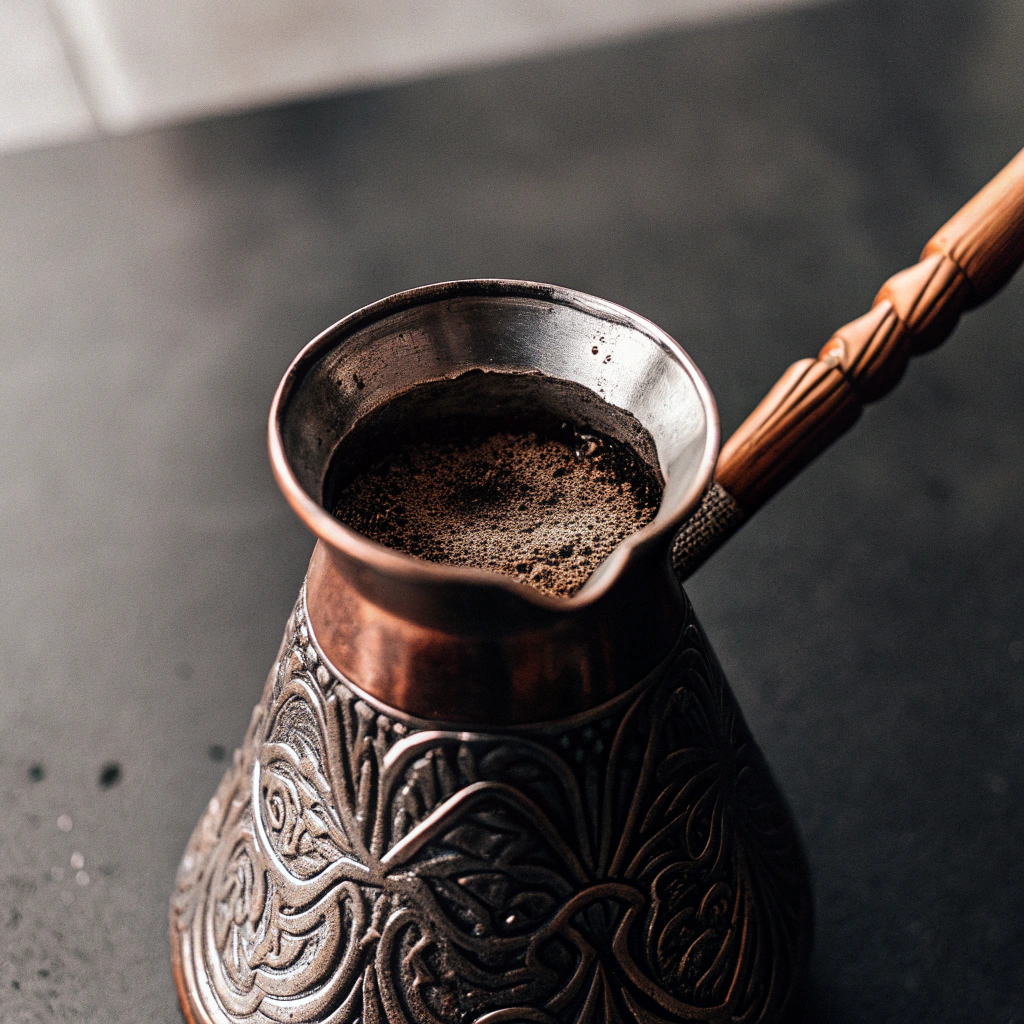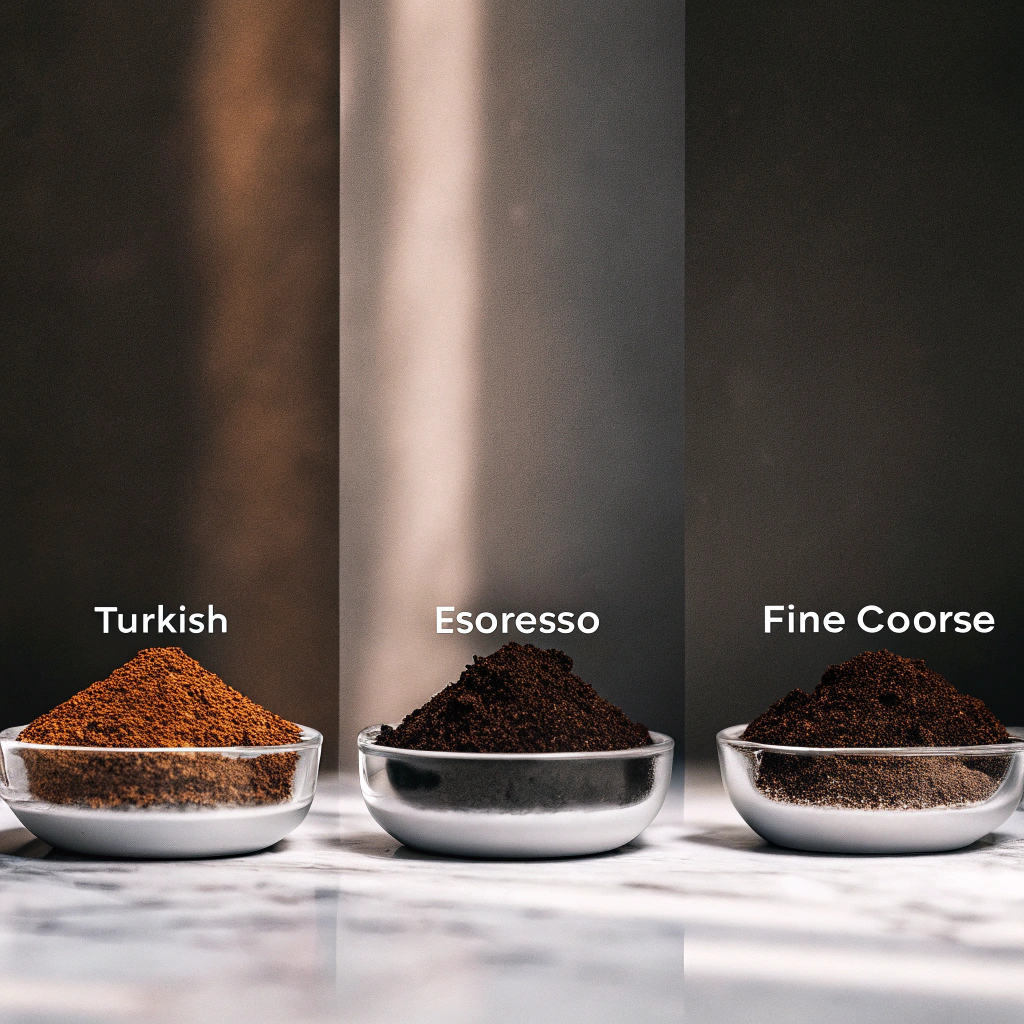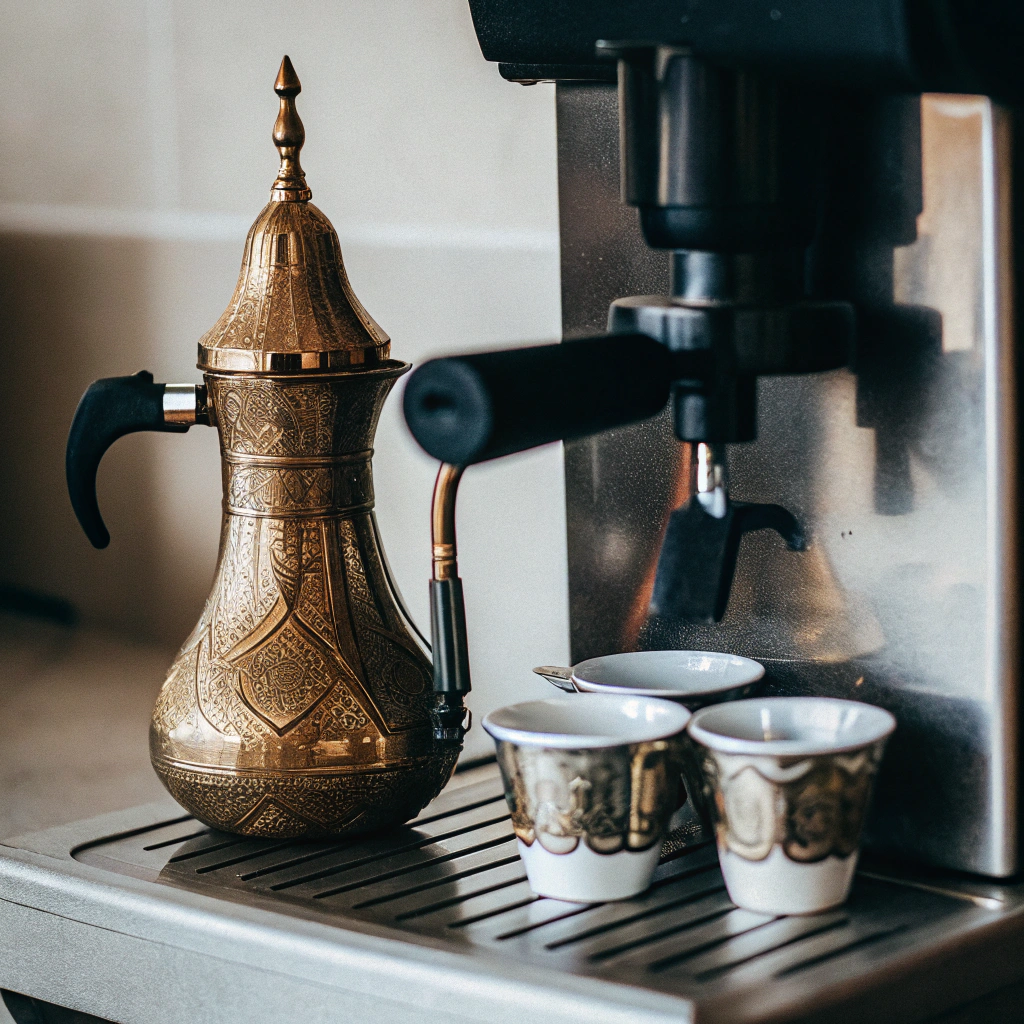Confused by espresso and Turkish coffee? Both are strong. But they are very different. I will clarify these unique coffee experiences for you.
Espresso is brewed under high pressure. This creates a quick, concentrated shot with crema. Turkish coffee is finely ground. It is boiled with sugar (optional). It is served unfiltered. This results in a thick, rich brew with sediment at the bottom.

Both espresso and Turkish coffee offer intense coffee experiences. But their paths from bean to cup are worlds apart. Understanding these distinctions can deepen your appreciation for each method. I have supplied tools for espresso making for years with SIF Coffee Tools. I have also enjoyed many coffee traditions. I find these differences fascinating. Let's explore these differences further. Then you can decide which brew suits your mood or your business.
Is Turkish coffee or espresso stronger?
Debating coffee strength is common. Is bold Turkish coffee more potent? Or is concentrated espresso the champion? Let's find out.
"Stronger" can mean caffeine. It can also mean taste intensity. Espresso often has more caffeine per ounce. This is due to pressure. Turkish coffee's long brew and fine grounds can extract much caffeine too. It produces an intense, full-bodied taste. It often depends on the serving size.

When we talk about "strong" coffee, we usually mean two things. One is caffeine content. The other is taste intensity. It is important to separate these. A coffee can taste very bold. But it might have less caffeine than a lighter-tasting one.
Defining "Strong" in Coffee
The word "strong" can be confusing. People use it for different coffee qualities. We need to look at caffeine. We also need to look at the taste.
Caffeine Content
Espresso is made using high pressure. This process extracts a lot of coffee solids. It also extracts caffeine very quickly. This makes espresso have a high amount of caffeine in each ounce. A normal espresso shot is about 1 ounce. It might have 60 to 100 milligrams of caffeine.
Turkish coffee1 takes a longer time to brew. The coffee grounds are very fine. They are often boiled more than once. This method can also pull out a lot of caffeine. But a usual serving of Turkish coffee is about 2 to 3 ounces. This serving might have 50 to 65 milligrams of caffeine. So, it could be less caffeine per ounce than espresso if the serving of Turkish coffee is larger. But the total caffeine in a big Turkish coffee serving might be the same as or more than one espresso.
Perceived Taste Intensity
Turkish coffee is not filtered. It contains tiny coffee particles. This gives it a very thick and rich flavor. Many people think this tastes "strong." Espresso has a syrupy body. Its flavor is intense. But it is filtered through the coffee puck in the portafilter. This creates a strong but different kind of intense taste.
| Feature | Espresso | Turkish Coffee |
|---|---|---|
| Caffeine/oz | Generally higher concentration | Can be high, depends on brew & serving size |
| Taste | Intense, syrupy, focused, crema | Thick, rich, muddy, sediment, often spiced |
| Mouthfeel | Heavier than drip, lighter than Turkish | Very full-bodied, sometimes gritty |
So, espresso might have more caffeine in each ounce. But a larger Turkish coffee serving can give a similar caffeine kick. Its taste is also very strong.
What is so special about Turkish coffee?
Heard of Turkish coffee's unique charm? It's more than just a drink. It is a cultural experience. Let's uncover its magic.
Turkish coffee is special. This is due to its ultra-fine grind. It also has traditional brewing in a cezve or ibrik. And it has a unique unfiltered serving method. This creates a rich, thick, and aromatic coffee. It also has deep cultural significance. It is often tied to hospitality and fortune-telling.

The real magic of Turkish coffee is in how it's made and what it represents. It is not just about the taste. It is about tradition.
The Unique Brewing Process
The main thing that makes Turkish coffee unique is how it's prepared. Coffee beans are ground into a powder. This powder is finer than what's used for espresso. Then, this powder is slowly simmered with water. Sugar is often added too. Sometimes cardamom is used. This happens in a special long-handled pot. It is called a cezve or ibrik. These pots are often made of copper. The coffee is heated until it almost boils several times. This helps to create a rich foam on top. It is very important not to let it boil over completely.
Unfiltered Richness
Turkish coffee is different from most other coffees. It is served without filtering. The fine grounds settle at the bottom of the small cup. This makes the coffee very thick and strong. It is also very aromatic. You drink it slowly. You leave the "mud" or grounds at the bottom. The flavor is truly unique.
Cultural Heritage
Turkish coffee is more than just a type of coffee. UNESCO recognizes it as an Intangible Cultural Heritage. It is very important in social events and for showing hospitality. It is even part of traditional ceremonies like weddings. People value the rituals for making and serving it. After drinking the coffee, people often look at the patterns made by the grounds in the cup. They use these patterns for fortune-telling. This is called tasseography. This cultural importance really makes Turkish coffee special. I remember being offered Turkish coffee on a trip to Istanbul. The welcome was amazing.
| Aspect | Description | Significance |
|---|---|---|
| Grind | Powder-fine, like flour | Essential for the brewing method and texture |
| Brewing Vessel | Cezve/Ibrik (long-handled pot) | Traditional, allows for controlled simmering |
| Serving | Unfiltered, grounds settle at the bottom | Creates unique thick texture, allows for fortune-telling |
| Culture | Hospitality, social rituals, UNESCO heritage, fortune-telling (tasseography) | Deeply embedded in social fabric and tradition |
How is Turkish coffee different from other coffees?
Turkish coffee stands out from the crowd. Its methods are ancient. Its taste is distinct. Let's see how it truly differs.
Turkish coffee differs by its powder-fine grind. It also differs by the direct boiling of grounds with water (and often sugar). And it has an unfiltered service. Most others, like espresso or drip, use coarser grinds. They extract through filtration or pressure, without boiling the grounds directly.

The way Turkish coffee is made really sets it apart. It is not just a small difference. It’s a whole different approach to brewing.
Core Differences in Preparation
The basic difference is how the coffee is made. And what ends up in your cup. With Turkish coffee, the grounds are boiled right with the water. They stay in contact for the whole process. Most other coffee making methods put hot water on coffee grounds. Then they separate the grounds from the liquid coffee.
Comparison with Other Methods
Let's look at some important points. This helps us see the differences clearly.
| Method | Grind Size | Brewing Method | Filtration | Body/Texture |
|---|---|---|---|---|
| Turkish | Powder-fine | Grounds boiled directly with water (simmered) | None | Very thick, muddy, rich |
| Espresso | Fine | Hot water forced under high pressure | Puck acts as filter | Syrupy, creamy (crema) |
| Drip/Pour Over | Medium-Coarse | Hot water drips through grounds in a filter | Paper/Metal | Clean, moderate |
| French Press | Coarse | Grounds steeped in hot water, then plunged | Metal Mesh | Fuller, some sediment |
Flavor Profile and Control
Making Turkish coffee gives less control over extraction details. This is different from espresso. Baristas carefully adjust grind, dose, and pressure for espresso. The direct boiling in Turkish coffee extracts many types of compounds. This leads to its unique, strong taste. It can sometimes be bitter. It can also be sweet if sugar is added while brewing. The flavor is not easy to copy consistently. This is one reason espresso machines are so popular in coffee shops. Espresso machines give consistent results. This is true in many places, including China, where my company SIF Coffee Tools does business. We see that businesses want high-quality espresso that is easy to make the same way every time. My insight is that the limited replicability and specific taste of Turkish coffee mean it's less widespread than espresso, especially in commercial settings relying on consistency.
Is Arabic coffee stronger than espresso?
Many compare Arabic coffee to espresso. Both pack a punch. But which one is truly stronger in taste and caffeine?
Arabic coffee (Qahwa) is lighter-roasted. It is often spiced with cardamom. It is brewed similarly to Turkish coffee. But it usually has a less fine grind. It is served in small, handleless cups. Espresso is darker roasted. It is pressure-brewed for a concentrated shot. Espresso generally has more caffeine per ounce.

When people talk about Arabic coffee, they often mean a specific style. This style has its own strength and character, very different from espresso.
Understanding Arabic Coffee (Qahwa2)
"Arabic coffee" can mean a few different types. But often, it refers to Qahwa. This coffee is common in the Arabian Peninsula. It is usually made from green coffee beans. These beans are roasted very lightly. Then they are ground and boiled. Cardamom is often added. Sometimes other spices like saffron or cloves are used. Traditionally, Qahwa is served without sugar. It comes in small cups called finjan.
Strength: Caffeine vs. Flavor Perception
Caffeine: Light roast beans can keep a bit more caffeine3 by weight than dark roast beans. But the brewing method is very important. Qahwa is made by simmering the coffee. This method can extract caffeine well. But espresso's pressure brewing is very good at extracting coffee components quickly and efficiently. When you compare them ounce for ounce, espresso usually has more caffeine. But people often drink Qahwa slowly. They might have many small cups. So, the total amount of caffeine you drink can add up.
Flavor: Qahwa tastes very different from espresso. It is lighter, almost like tea. It has strong spice flavors4, especially cardamom. The "roasty" coffee taste is not as strong as in espresso. So, it is not "strong" in the same way a bold, dark espresso is. The "strength" of Qahwa comes from its aromatic spices. It also comes from its important place in the culture.
The experience of drinking each is very different. Espresso gives a quick, intense boost. Qahwa is part of a slower, more social tradition.
| Feature | Espresso | Arabic Coffee (Qahwa) |
|---|---|---|
| Roast Level | Medium to Dark | Very Light (sometimes green) |
| Grind | Fine | Coarse to Medium (varies) |
| Brewing | High pressure, quick extraction | Simmered/boiled, longer extraction |
| Flavor Base | Concentrated coffee, roasty, notes of bean | Spiced (cardamom dominant), lighter coffee |
| Caffeine/oz | Higher | Lower per ounce, total can vary |
| Body | Syrupy, crema | Lighter, tea-like, thin |
Conclusion
Espresso is fast, pressured. Turkish is slow, boiled, unfiltered. Each offers a unique tradition. For premium espresso tools, I'm Billy at SIF Coffee Tools, bi***@************et.com.
-
Discover the unique brewing methods and flavors of Turkish coffee, which can enhance your coffee experience. ↩
-
Explore the rich traditions and preparation methods of Qahwa, a unique coffee experience from the Arabian Peninsula. ↩
-
Understanding caffeine content can enhance your coffee choices; discover how Qahwa stacks up against espresso. ↩
-
Dive into the world of spices in Qahwa to appreciate its unique flavor profile and cultural significance. ↩




